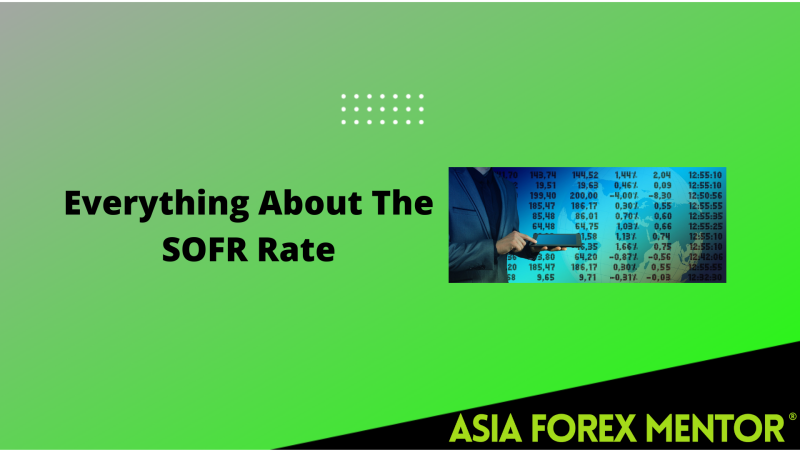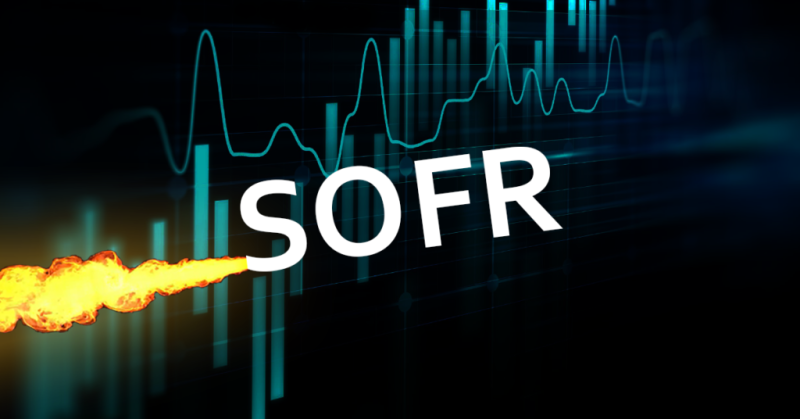
SOFR (Secured Overnight Financing Rate) refers to a benchmark interest rate applying for dollar-dominated loans and derivatives replacing the LIBOR (London Interbank Offered Rate). In general, more than $80 trillion interest rate swaps in notional debt transited to the secured overnight financing rate in October 2020.
Reports indicate that the transition will upsurge long-term liquidity and also cause substantial short-term exchange instability in derivatives . The daily SOFR reflects the transaction within the Treasury repurchase market, a platform where stock investors provide banks with overnight loans that get backed with bond assets.
It would be best to mention that the Bank of New York Federal Reserve Bank started publishing the SOFR in April 2018 to replace the LIBOR, a long-term benchmark rate popular across the globe. In any case, benchmark rates like SOFTR are crucial for trading derivatives.
On the other hand, interest rate swaps describe agreements where the parties exchange their fixed-rate interests with floating-rate interest monetary policy. For instance, one trader agrees to pay fixed interest in the vanilla swap, and the other bears a floating interest based on the overnight financing rate SOFR. Yet, the interest rate can be lower or higher than the SOFR based on the traders’ interest rate conditions and credit rating.
Generally, the trader can benefit whenever the interest rates rise since the value of the SOFR-based payments is somewhat higher. Nevertheless, the fixed-rate prices to the seller will remain the same. Most importantly, the inverse will occur if the rates decrease.
Also Read: What Is Fixed Exchange Rate

Contents
Secured Overnight Financing Rate History
The LIBOR has served as the only go-to interest rate since the mid-1980s for banks and investors to peg their credit agreements. It comprises seven maturities and five currencies. Users determine it by calculating the interest rate that guides central global banks and investors to lend funds.
The five currencies include CHF (Swiss franc), JPY (Japanese yen, GBP (British pound), EUR (euro), and USD (US dollar). The most popular LIBOR currency option is the US dollar, which also represents the current LIBOR rate.
Regulators became worried about over-reliance on one broad measure in 2008 following the financial crisis. The LIBOR is based mainly on global banks estimates and surveys, which do not represent actual transactions. The drawbacks of relying on this benchmark became more explicit in 2012 after a report indicated that several financial institutions rigid their information to reap more profits from the LIBOR benchmark.
Besides, minimal interbank borrowing after the financial crisis prompted banking regulations officials to express concerns that limited LIBOR trading activities. Later on, the British LIBOR regulator said it would no longer require interbank lending details after 2021. Thus, developed countries worked on alternative lending reference rates to replace the LIBOR.
The Federal Reserve assembled an Alternative Reference Rate Committee that involved several central banks choosing an alternative reference interest rate for the US. The committee selected the SOFR as the most reliable US dollar benchmark for denominated contracts.
LIBOR Vs SOFR
The SOFR is unlike the LIBOR. It comes with bilateral treasury repo transactions market trading about 1,500 times that of the interbank loans, making it a more reliable indicator for borrowing interests. Also, the SOFR is based on data reflecting observable transactions instead of borrowing rate estimates like for the LIBOR business day.
Transition To SOFR
Right now, the SOFR and LIBOR coexist. Nevertheless, research shows that the SOFR will supplant the LIBOR as the most accurate benchmark for credit products and dollar-dominated derivatives in the coming few years.
The Federal Reserve announced on 30th November 2020 that they will phase out and replace the LIBOR by June 2023. They instructed banks to stop writing contracts based on LIBOR by December 2021 and should wrap all LIBOR contracts by 30th June 2023.
Transition Challenges
The process of transitions to a new benchmark is somewhat complicated since trillions of dollars that are worth of LIBOR contracts are outstanding. Some warranties will continue extent until New York Fed publishes in 2023. They include the widely popular three-month US dollar LIBOR contract about $200 trillion of contracts and debts.
In general, repricing contracts is complicated since these two rates feature several crucial differences. For example, the LIBOR reflects unsecured loans, and the SOFR reflects loans that the treasury securities back, which is a risk-free rate. Besides, the LIBOR comes with 35 different speeds, while the SOFR publishes one rate based on overnight borrowing costs.
It would be best to mention that the transition to the SOFR model will significantly impact the derivatives market. Nevertheless, it can also cause a considerable impact on the consumer credit products such as private student loans and adjustable-rate mortgages. It will also impact borrowing cash overnight collateralized instruments like the volume weighted median, commercial paper and compounded sofr averages.
Also Read: What Is Stock Float?
FAQ
1. Is SOFR better than LIBOR?
The SOFR is unlike the LIBOR. It comes with bilateral treasury repo transactions market trading about 1,500 times that of the interbank loans. This feature makes it a more reliable indicator for borrowing interests. Also, the SOFR is based on data reflecting observable transactions instead of borrowing rate estimates like for the LIBOR approach.
2. What is SOFR based on?
SOFR describes a reliable benchmark that financial institutions can calculate interest rates for consumers and business loans. It features an overnight financing option that references its model of setting interests’ rates for the lenders. The SOFR is based on the interest rates that large financial companies use to pay each other loans overnight.
3. Why is SOFR called risk free rate?
The explanation to this query is that SOFR works based on overnight Treasury transactions, making it a risk-free rate. On the other hand, LIBOR features a credit risk since it involves borrowing from a bank. For that reason, most LIBOR-referencing contracts do not focus on this specific credit risk, although they still contain it.
4. Why did ARRC choose SOFR?
The ARRC chose SOFR as the best practice rate for use in several new USD transactions and other financial contracts. This choice indicates that the ARRC would prefer USD LIBOR alternatives. In any case, SOFR features an overnight secured rate that better reflects the method through which financial institutions can fund themselves for business today. SOFR benchmark now works as the best rate that financial institutions utilize to price consumers and business loans. It bases on the loan rates that the large financial firms pay to one another through overnight loans.
5. How is SOFR calculated?
First, it is crucial to calculate the simple arithmetic average for the daily SOFR rates in the calendar month to calculate the ultimate loan rate for a one-month SOFR Future. In other words, it represents all rates sum in the month period that gets divided by the sum of calendar days within that month.

















